Inflatables are in demand, thanks to advanced technologies that create higher quality products and new applications.
by Jeff Moravec
There was a time when consumers viewed inflatable products as bargain-basement cousins to rigid objects. Think of the air mattress rolled out on the bedroom floor for a middle-school sleepover or the discount-store blow-up swimming pool in the backyard. Their lifespans were measured in days.
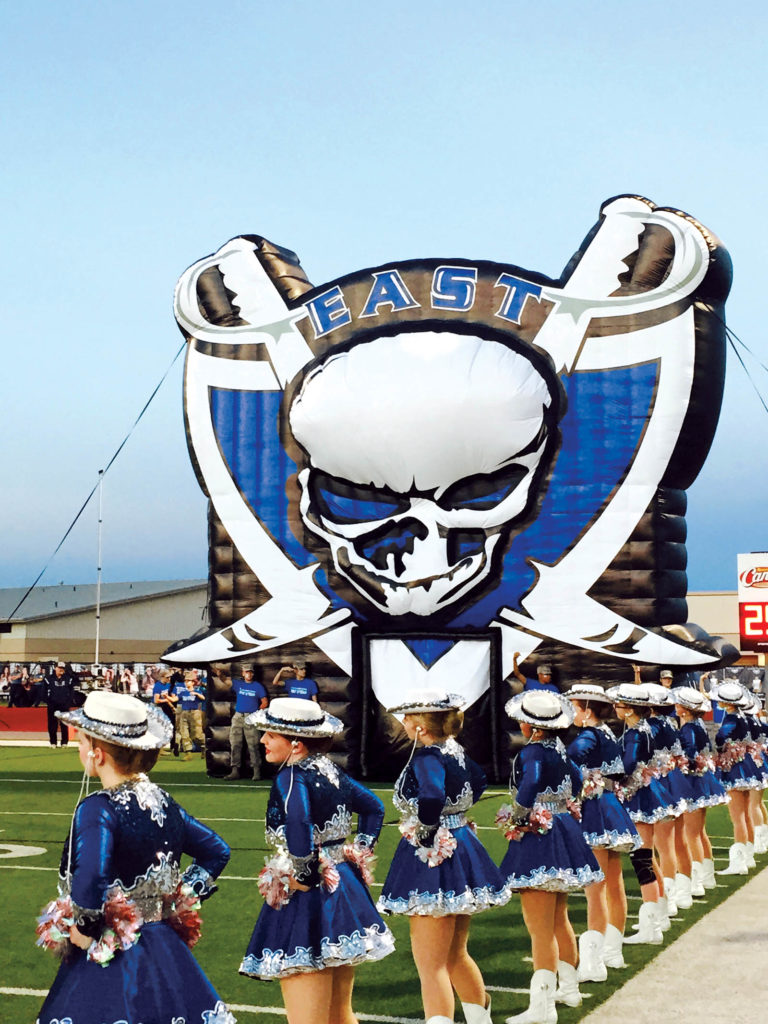
That rap obscures the fact that quality inflatables are legitimate structures, and the companies manufacturing and selling them have been in business for decades. What’s changed is the rapid expansion in the types of structures that have “gone inflatable,” putting them in the public eye like never before, as well as the developing technologies making new applications possible.
As inflatables have grown in popularity (see “Attention grabbers,” page 56), consumers have begun to discover that they can be equal to a rigid alternative—and often offer superior qualities, such as portability. Ever try to pack a 10-by-20-foot billboard in a duffel bag? Inflatables for recreation, entertainment, athletics and other applications are definitely on the rise.
Can it be done?
The inflatable evolution can be traced in part to the advent of the internet, according to Tom Meacham, president of Landmark Creations in Burnsville, Minn., which has been manufacturing custom inflatables since 1986. The company is known for working with artists such as Lizzo and the Talking Heads’ David Byrne. For Byrne, Landmark created a 48-foot-diameter inflatable globe for an exhibition in New York’s High Line Park. Lizzo’s career blew up in 2019, in part due to her performance at the 2019 MTV Video Music Awards in front of a now-infamous Landmark creation (which won’t be described in this rated-G magazine).
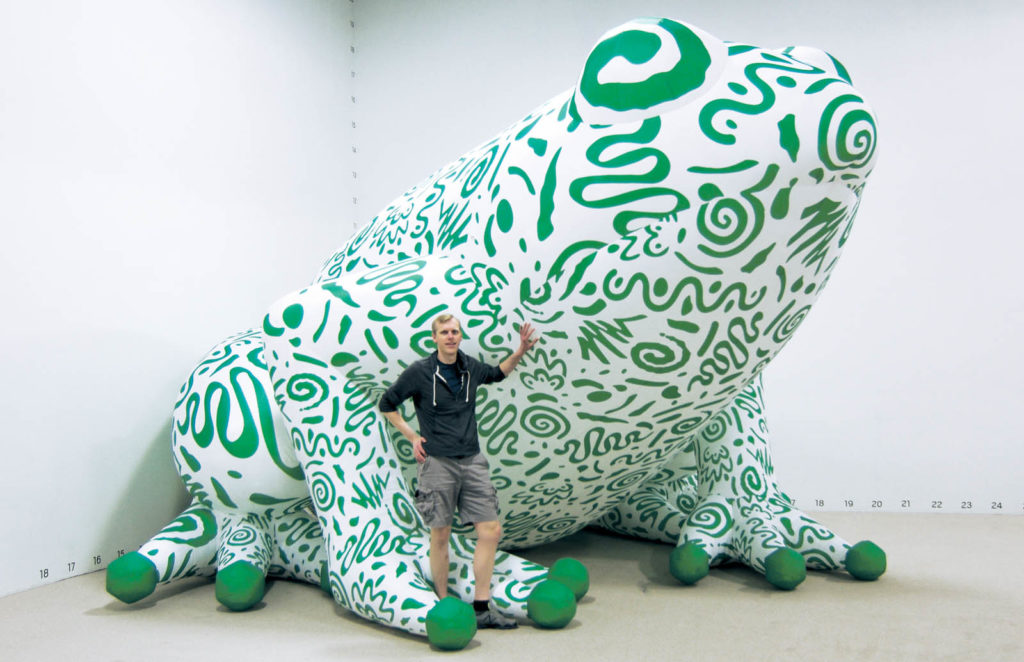
“When we first started, there was no internet; everything we sold was to a dealer base,” says Meacham, who has been with Landmark since 1993. “Once the internet came along, it was easy [for end users] to find a manufacturer directly, instead of going through a middleman. The ability to demonstrate what you could do was certainly expanded.”
Once potential customers had more exposure to inflatable technology, demand grew—along with innovation and more varied applications.
“Advancements were driven up from the end user,” Meacham says. “‘This is what we want, can you do it?’ Our customers have always been the driver of innovation.”
It helped, Meacham says, that advancing technology allowed inflatable manufacturers to move from sometimes crude physical renderings of customer ideas, made from clay, to computer-generated 3D models. Painting by hand also was replaced by digital printing, further improving quality.
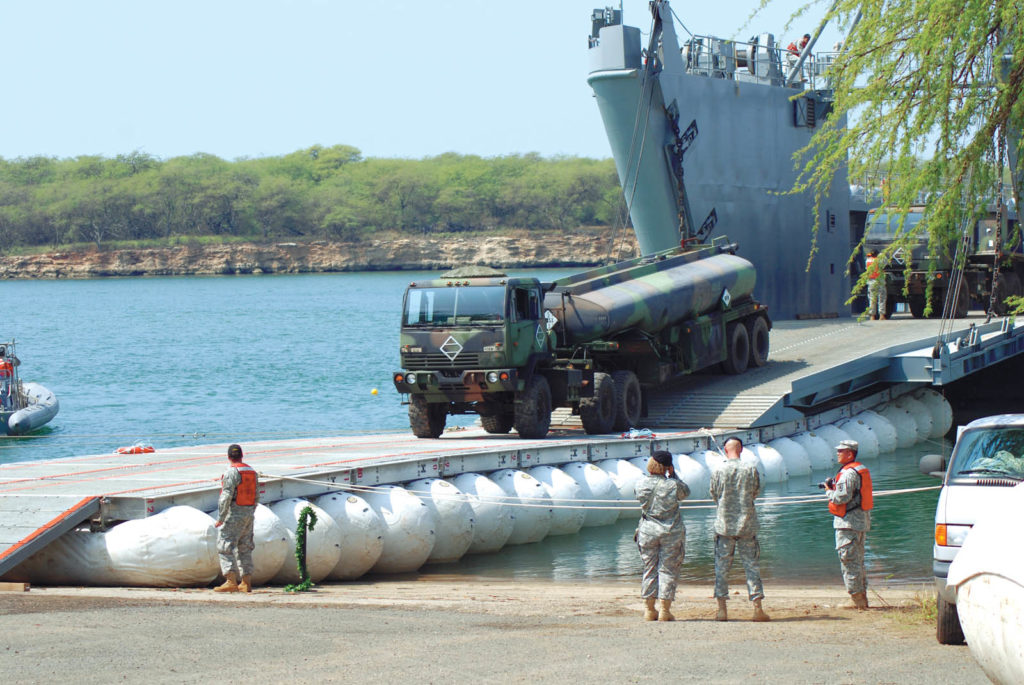
Technology meets demand
Stand-up paddle boarding was one of the fastest growing sports in the U.S. in the last decade, thanks in part to new inflatable technology. While surfers were known to use their boards while standing up as far back as the 1940s, actual stand-up paddle boards (SUPs) were not widely manufactured until the early 2000s. The first SUPs, made from foam covered in fiberglass, were labor-intensive to manufacture and therefore expensive for consumers.
Sea Eagle Boats Inc., Port Jefferson, N.Y., has designed inflatable boats
since 1968, but according to partner John Hoge, the technology to make inflatable SUP production practical is a recent development.
The existence of inflatable paddle boards is due to advancements in drop-stitch technology, Hoge says. Inflatable SUPs are made from an airtight fabric coating on the top and bottom, and between those layers of fiber mesh is a series of thousands of polyester threads connecting the layers.
“Previously, an inflatable structure had to be some kind of tube or ball to get the right air pressure,” Hoge says. “With today’s drop-stitch technology, you can make something flat, like a paddle board, and get air pressure at 15 PSI, so it’s extremely rigid. With traditional inflatables, you can only get 4 PSI or maybe 5 PSI at the highest.”
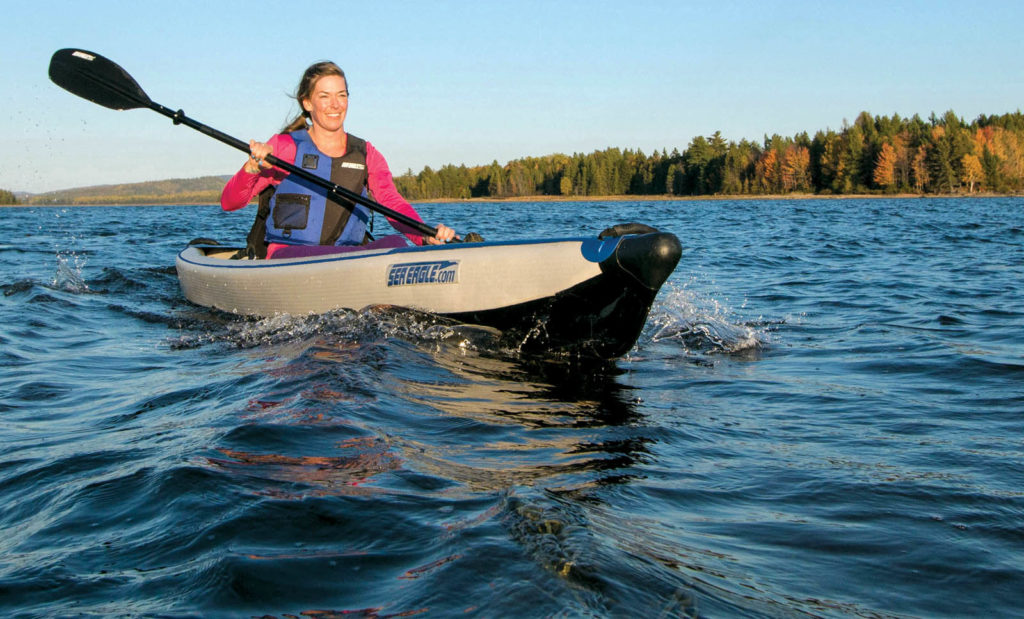
As inflatable SUPs began hitting the market, less expensive alternatives to the rigid fiberglass SUPs began appearing as well, most made from rotomolded polyethylene. While cheaper, the plastic boards are heavier, and users often found better performance from an inflatable SUP, further spurring their adoption. Today, Sea Eagle sells nine different inflatable SUPs, including two models designed for fishing.
Other types of inflatable watercraft, such as canoes and kayaks, have also been growing in popularity, manufacturers say, especially as competition has driven improvements in quality and durability.
“There are so many good products out there you can’t really survive putting out a junk product,” says Dave Demaree, president and head designer at Demaree Inflatable Boats, which manufactures industrial-grade inflatable watercraft and related products in Friendsville, Md. “Fortunately, I’m pretty old school. I believe in making a product worth buying.”
Inflatable kayaks are slower on the water than rigid models, but they offer other advantages, says Hoge, such as better buoyancy, portability and self-bailing options. In addition, inflatables draw so little water they can go where many other vessels cannot. That’s a real advantage when someone is fishing and wants to check out a spot that’s too shallow for a bigger boat.
Demand isn’t limited to recreational users either. “The geophysics industry does a lot of surveys in shallow water, and inflatables tend to ground better than hard hulls,” Demaree says. “You bounce into something, you can bounce back off and not do damage to a hull or a crew, and continue to do your job.”
The price of inflatable boats is also a factor in their popularity, says Hoge. “Boating traditionally had a big blue-collar contingent, especially for fishing. You could buy a boat for a couple of thousand dollars in the 1980s and have a nice time fishing. That era is over, mainly because of the collapse of 2008—boats became vastly more expensive. Inflatables fill an important gap, and they’re bringing new people into the market.”
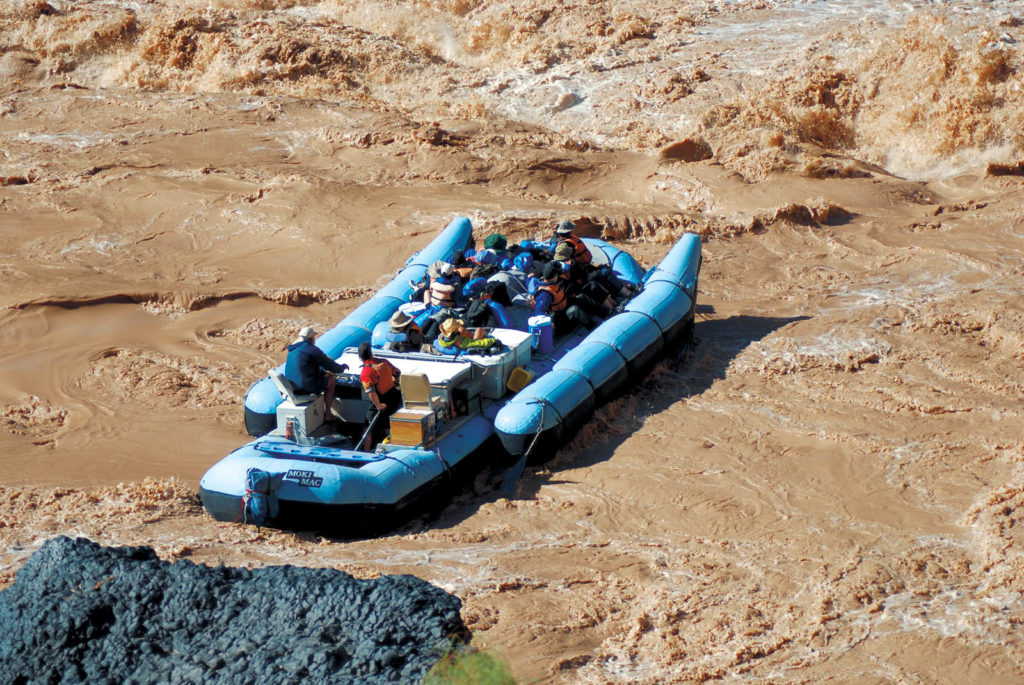
At the same time, there are price differences in the market, often tied to manufacturing processes. According to Demaree, the heat-sealing process that is becoming popular for many applications with plastic-coated fabrics reduces labor costs, but it’s not what Demaree uses. “We build everything out of uncured rubber, and once the boat is finished, we put it in a big dry-heat autoclave and vulcanize it under heat and pressure,” he explains. “The advantage to that process is it gives the boat great strength and long life.”
As always, a robust economy is good for any business that relies on discretionary spending. “A good example is the river guides we sell to,” Demaree explains. “A lot of them had a really good summer, and now they’re in the process of replacing boats that they have been repairing for years and years.”
Bigger in Texas
While there has been solid growth in the market for inflatable watercraft, it’s dwarfed by the explosion of inflatable products in the sports market. It’s nearly impossible to go to a stadium these days—especially if the sport is football—and not see inflatables of every kind.
All-Star Inflatables Inc. of Dallas, Texas, has done extensive work in the sports world, according to owner Paul Oliver III, including the large inflatable helmets and arches and the tunnels through which football teams enter the field. The company is producing inflatable products for the latest iteration of the XFL, which began play in February.

“Here in Texas especially, everybody wants to be bigger and better than the next guy,” says Oliver with a laugh. “All the schools want to outdo their rivals. So the entrance tunnels are getting longer and the mascots are getting bigger, more intense and more real-looking.”
Anything that could serve as an alternative to inflatables in the sports market would be “big, bulky and heavy,” says Oliver, a problem especially in stadiums where storage space is at a premium.
Oliver has been in business for 25 years, but says it hasn’t always been easy. “So much of the manufacturing left and went to China 15 years ago,” he says. “We toughed it out and stayed, even after being offered a large amount of money to sell to a Chinese company. We stuck it out, we wiggled our way through, and we found different inflatables to build to keep it here in the U.S. and to keep our employees employed.”
The market is starting to come back quickly, Oliver says, “and it’s not just because of the tariffs. All of this business went overseas, and they raised prices so high that it got to the point where it got cheaper to find what you needed in the U.S.”
High expectations
With technological advancements opening new markets, companies that manufacture and sell inflatable products emphasize quality and creativity to differentiate themselves from the competition.
“From our design team to our sewing team, we think we’re the best of the best in the industry,” says Jill Stolz, sales manager at Inflatable Design Group, which manufactures custom inflatables in San Diego, Calif. Among the company’s creations is a 40-foot inflatable slide, made for the Adult Swim network, shaped like the head of Morty from the network’s Rick and Morty show.
“We have seamstresses that have been sewing for 20-plus years and a designer with a very keen eye who nails it every time,” she says. “That’s what makes the difference.”
And, as is true in the rest of the industry, the ability to deliver is key.
“Meeting deadlines is what’s important,” says Meacham. “Customers have very high expectations. It’s the type of industry where everyone knows the lead time is short, especially if it’s an add-on or it’s something that couldn’t get fabricated in a different medium in time. But that’s the discipline.”
Jeff Moravec is a freelance writer based in Minneapolis, Minn.
SIDEBAR: Instant hill
You can’t move mountains—but you can move an inflatable hill.
With new technologies available to inflatable manufacturers, many products could potentially have an inflatable version that solves a problem of its rigid counterpart. The trick may be to discern which commercial applications will catch on. Creativity is great, but there has to be a market.
All-Star Inflatables Inc. of Dallas, Texas, has created a number of inflatable products designed for sports training, says owner Paul Oliver III. These include tumbling mats, golf simulators, a sandless “sand” pit and an inflatable hill. Yes, an inflatable hill.
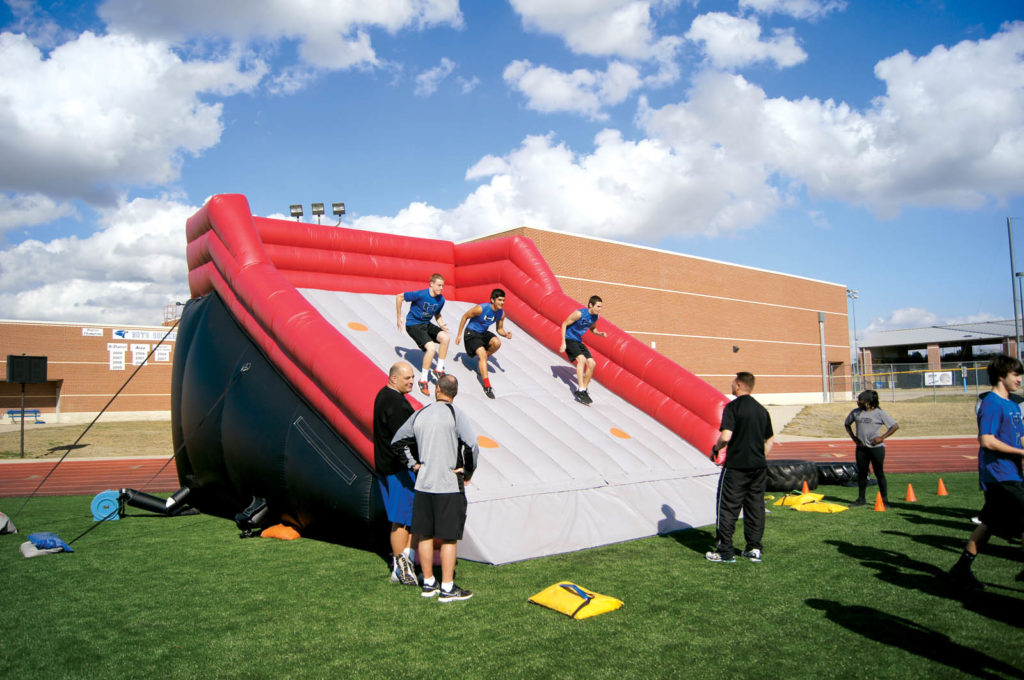
“The Inflatable Incline Trainer avoids the need to build a dirt or grass hill for training,” Oliver says of the structure, which is made from 18-ounce vinyl. “Plus, it can be moved to where it’s needed and is easily stored when it isn’t.” The inflatable hill is also gentler on joints and ligaments.
Oliver has put a patent on the design of the device, which was in development for five years before its recent introduction. The key to the product, he says, involves another component that also has been patented—the nonslip running surface used on the structure.
 TEXTILES.ORG
TEXTILES.ORG


